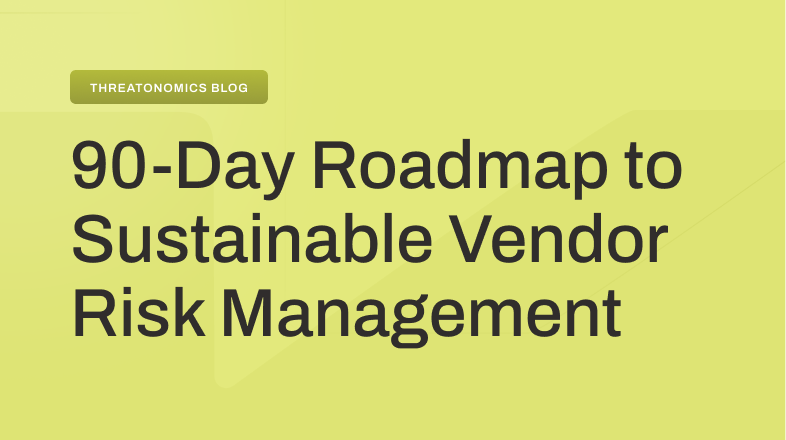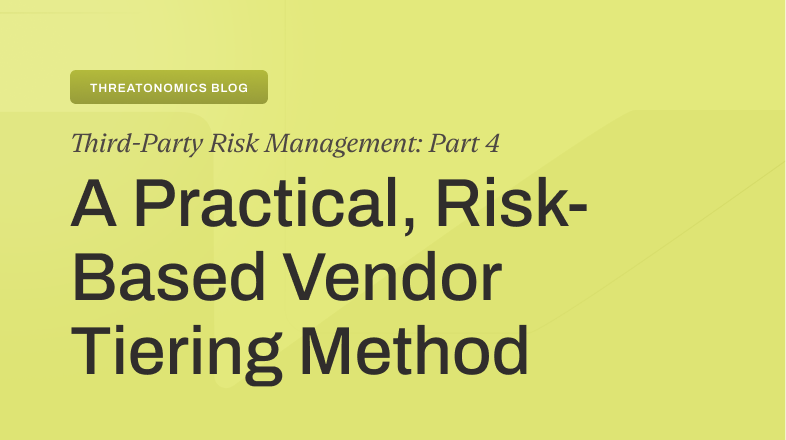Digital risk is constantly evolving
Assessing risk requires the ability to measure the frequency and severity of events. Cyber insurance lack historical data and standards associated with more traditional forms of insurance, making it incredibly challenging to track or even designate measurement. The current response has been to rely on status-quo benchmarks. However, these are often ineffective as they fail to address each organization’s unique digital risk.
For the cyber insurance market to remain relevant in the ever-shifting risk landscape, it must innovate new strategies that will help clients directly manage their digital risk rather than just transferring it. Large, sophisticated enterprises, in particular, need more than just a standard insurance policy.
To withstand incidents, they must adopt a Cyber Resilient strategy: aligning security visibility, risk analysis, and tailored insurance to balance business objectives and risk mitigation, making informed trade-offs about digital risk when necessary.
The Resilience Solution helps mid and large-market enterprises create and implement these strategies. It has led to one of the lowest loss ratios in the cyber insurance industry and, more importantly, has improved our client’s resilience to threats like ransomware. In 2022, our solution helped 100% of Resilience’s Solution clients who experienced a ransomware incident avoid paying a ransom to resolve the incident.
The Challenge with Cyber Insurance
Cyber risk is fluid, and adding software, third-party vendors, cloud services, or discovering potential vulnerabilities demands constant monitoring and testing. Large enterprises, in particular, have massive and complex cyber risk management protocols that require multiple departments, leaders, and minds to orchestrate. Too often, each of these teams operates with their own set of priorities, leading them to make decisions in departmental silos. This causes three major problems that we see in organizations today.
- Modern CISOs are becoming burned out fighting fires and increasing liability. All of their attention goes to determining which products could prevent the latest and greatest threats to their infrastructure. Their efforts are isolated from the digital risk transfer solutions that are meant to work in tandem with security visibility.
- Risk Managers are feeling overwhelmed by the complexity of cyber and need guidance in understanding the technicalities of security protocols. They often purchase cyber insurance without strategic insight from the teams trying to manage risk.
- CFOs and business leaders have a know/do gap. They need confidence in a unified approach that tackles cyber as a financial risk and makes decisions based on what is right for the business.
Resilience’s Solution helps CISOs, Risk Managers, and business leadership work together to align on strategies that translate cyber risk into financial risk. We help them learn to communicate in the same language – dollars and cents – in order to align on priorities that keep the health of the business top of mind. Integrating the silos of security, finance, and risk under a common goal leads to efficiency and effectiveness. This creation of a united front against cyber risk fosters the creation of a financially prioritized and comprehensive risk management strategy that enables organizations to withstand a cyber incident.
Cyber Resilient Enterprises in Action
Resilience has a strong track record of helping large organizations recover from cyber incidents with minimal business interruption. When a client with a large enterprise realized they had experienced two data security incidents within the same month, they needed to quickly evaluate whether customers’ and employees’ private data were accessed and whether they had data breach notification obligations as a result.
The Resilience Claims & Incident Management team provided a detailed Vendor Risk Management Guide to help them assess their third-party risk. The team also provided our Crisis Communications Guide and introduced them to panel-approved privacy law firms that specialize in assisting clients throughout the lifecycle of a privacy matter.
Our holistic solution helped this client quickly respond to both incidents, mitigating potential losses and minimizing incident response costs. This is a direct result of the holistic response strategies Resilience provided that allowed the client to recover without losing private data, making an extortion payment, or experiencing significant business interruption.
Insurance alone is not enough to build a Cyber Resilient environment
While incredibly valuable in recovering financial losses after an event, insurance does not function to prevent an incident from occurring in the first place. The Resilience Solution contains security visibility, cyber risk quantification, and insurance working together in an integrated manner. This approach helps clients deal with cyber as both a technical and a financial challenge. Our solution achieves this through five key integrated benefits that work to break down silos across leadership and establish a business environment that can withstand a cyber incident.
- Finanically-Proven AI Platform: We offer a continuous learning system that creates clarity from cybersecurity visibility. Our platform uses machine learning technology and AI to power our cyber risk models, helping leadership make confident and financially backed decisions around exposures and controls.
- Human-in-the-Loop Partnership: Our team provides expertise to guide, validate, and augment your cyber risk team. Unlike most solutions, we apply real-world tactical knowledge to contextualize, prioritize, and implement security controls specific to our client’s unique environment and risk exposure.
- Quantified Action Plan: We provide prioritization and context for faster and better decision-making. Using data provided by our AI platform, we help our clients design a peril-based investment plan based on their risk profile and our proprietary cyber risk quantification models.
- Responsive Policy: We offer comprehensive coverage that is purpose-built for the dynamism and complexity of cyber risk. Our policies are tailored to consider each client’s individual risk profile by leveraging our analytical tools to provide our in-house underwriting team with enhanced cybersecurity visibility.
- Cyber Advocacy Program: We offer resources to activate an engaged community up and down your organization. This program gives security and risk management leadership the information to advocate for the necessary tools. It accelerates stakeholder buy-in by offering data, analysis, and the financial threshold required to build a strong cyber infrastructure.
Achieve Resilience in a Shifting Digital Risk Climate
In a cyber risk climate where adversary tactics are constantly shifting, Resilience’s holistic approach to risk management has helped us achieve loss ratios that are less than 1/3rd of the industry average in 2022 and has had dramatic results in keeping clients resilient to ransomware.
Request a demo from Resilience today and discover how their integrated benefits and holistic approach can help your organization withstand cyber incidents and thrive in a cyber risk climate where constant adaptation is crucial.








